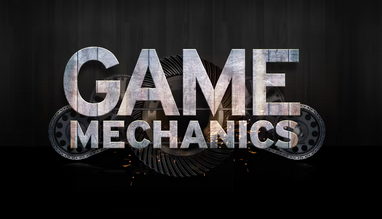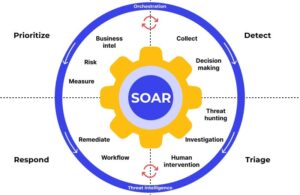Cooperative Gaming Mechanics: Enhancing Player Experience and Team Dynamics
In recent years, the gaming industry has witnessed a significant shift towards cooperative gameplay mechanics. This trend has transformed the landscape of multiplayer gaming, emphasizing teamwork, communication, and shared experiences. As games become more complex and immersive, developers are finding innovative ways to encourage player collaboration, resulting in richer and more engaging gaming experiences.
The Evolution of Multiplayer Gaming Strategies
The journey from simple competitive multiplayer to sophisticated cooperative gameplay has been marked by technological advancements and changing player preferences. Early multiplayer games focused primarily on player-versus-player combat, but today’s titles often incorporate complex cooperative elements that require strategic thinking and teamwork.
Key Cooperative Game Mechanics in Popular Titles
Battlefield’s Medic System: Fostering Team Support
The Battlefield series has long been known for its class-based gameplay, with the medic role serving as a prime example of cooperative mechanics. Medics can heal and revive teammates, encouraging players to work together and support each other on the virtual battlefield. This mechanic not only enhances gameplay but also creates a sense of camaraderie among players.
VoIP in Multiplayer Games: Enhancing Communication and Strategy
Voice over Internet Protocol (VoIP) has become a staple in many multiplayer games, allowing real-time communication between players. Games like Squad have taken this a step further by implementing multi-channel communication systems, enabling players to coordinate at different levels of organization. This mechanic is crucial for strategic gameplay and team cohesion.
For more information on VoIP implementation in games, refer to the Game Developer’s Guide to Voice Chat: https://www.gamedeveloper.com/programming/game-developer-s-guide-to-voice-chat
Death Stranding’s Cooperative Building: Asynchronous Player Interaction
Hideo Kojima’s Death Stranding introduced a unique form of asynchronous multiplayer, where players can indirectly assist each other by building structures in the game world. This innovative approach to cooperation allows players to feel connected and helpful, even when not directly interacting in real-time.
Dark Souls Summoning: Unique Approach to Player Assistance
The Souls series, including Dark Souls and Bloodborne, features a summoning system that allows players to call for help from others. This mechanic not only provides assistance in difficult areas but also creates a sense of community and shared struggle among players.
Technical Aspects of Cooperative Mechanics
Implementing VoIP Systems in Games
VoIP integration in games involves complex audio compression algorithms, network optimization, and user interface design. Developers must balance audio quality with bandwidth constraints to ensure smooth communication without impacting game performance.
Asynchronous Multiplayer Architectures
Games like Death Stranding utilize sophisticated server architectures to manage player interactions across different game instances. This involves data synchronization, object persistence, and clever game design to create a seamless cooperative experience.
Summoning Mechanics and Network Challenges
The summoning system in Dark Souls presents unique networking challenges. Developers must manage player connections, ensure proper synchronization, and handle various edge cases to maintain a smooth cooperative experience.
Psychological Benefits of Cooperative Gaming
Developing Social Skills Through Virtual Teamwork
Cooperative gaming has been shown to improve social skills, including communication, empathy, and conflict resolution. Players learn to work together towards common goals, often translating these skills to real-world scenarios.
Enhancing Problem-Solving Abilities in Group Settings
Many cooperative games present complex challenges that require teamwork to overcome. This fosters critical thinking and problem-solving skills in a group context, valuable abilities in both gaming and professional environments.
Industry Perspectives on Cooperative Gaming
Quotes from Game Developers
Gabe Newell, co-founder of Valve Corporation, stated, “We’ve found that when players work together, they become more engaged and committed to the game. Cooperative modes often create deeper connections that extend beyond the screen.”
Research Findings on Cooperative Mechanics
A study by Rocha, Mascarenhas, and Prada (2008) identified key mechanics that stimulate cooperation in games, including complementary roles, synergistic abilities, and shared goals. These findings have influenced game design practices across the industry.
The Future of Cooperative Gaming
Emerging Trends in Multiplayer Game Design
The future of cooperative gaming looks bright, with trends pointing towards more immersive shared experiences. Virtual and augmented reality technologies are opening new avenues for cooperative gameplay, potentially revolutionizing how players interact in virtual spaces.
Potential Innovations in Player Interaction
Advancements in AI could lead to more sophisticated NPCs that can genuinely assist players, blurring the lines between AI-controlled and player-controlled cooperative elements. Additionally, cross-platform play is becoming more prevalent, allowing for broader cooperative experiences across different gaming systems.
Conclusion: The Lasting Impact of Cooperative Mechanics on Gaming Culture
Cooperative gaming mechanics have fundamentally changed how players interact with games and each other. By fostering teamwork, communication, and shared experiences, these mechanics have created a more social and engaging gaming landscape. As technology continues to evolve, we can expect even more innovative approaches to cooperative gameplay, further enriching the world of interactive entertainment.














Post Comment